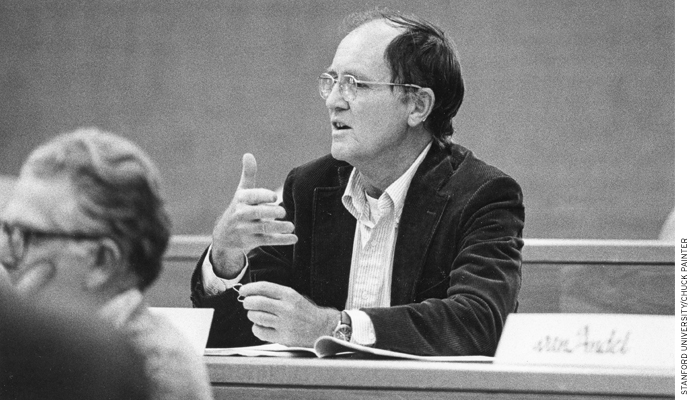
When David Tyack became my advisor in 1972, there was only a four-year age difference between us. I had chosen to pursue a doctorate in the history of education on the cusp of middle age, already married and with two preteen daughters. Over the next decade, as I completed my degree, my professional relationship with Tyack morphed into a friendship. We eventually team-taught and wrote a book together, all while taking weekly bike rides around the San Francisco Bay Area.
In a letter that I gave him while he was alive, I summed up how I felt about Tyack as a scholar, teacher, and man:
You are a rare kind of academic, Dave, one whose research, teaching, and advising were wrapped up in smarts, humility, and a sensitive thoughtfulness that was (and is) uncommon among those who work in universities. You set a high standard for all of us in how you lived your life, nurtured ideas, and practiced your craft. I am so grateful for having worked closely with you for these many years.
Tyack searched for answers in his scholarship. With his wife Elisabeth Hansot, he investigated the origins of coed schooling, educational leadership in the nineteenth and twentieth centuries, and the social histories of black youth in school. His work invited historians, social scientists, and educators to examine the links between law and schooling, the relationship between schooling and work, and schooling in the Great Depression.
In the 1970s, Tyack helped fashion a “new” history of schooling that challenged the inspirational story of progress an earlier generation had constructed. Revisionist historians of the day, such as Michael Katz, Joel Spring, and Clarence Karier, saw public schools as social tools of ideological domination and economic exploitation. While Tyack shared many of their values, he did not share their interpretations or lines of inquiry. As David Labaree explained at Tyack’s November 19, 2016, memorial service, Tyack “refused to let himself be easily categorized. Unlike many academics, he never allied himself with a particular ‘ism.’”
Tyack’s The One Best System, published in 1974, offered a more balanced view of the past. While the book pointed out how urban schools fell far short of the egalitarian dream, Tyack, unlike other revisionists, did not condemn reformers, schools, or teachers. Instead, he saw all parties as responding to massive social, political, and organizational changes in the larger society. Further, he discovered that the unintended consequences of well-intentioned reformers often ending up hurting those who were supposed to gain from reform-driven policies and practices.
Because all written history is interpretation, there are now revisionist historians who reinterpret The One Best System, which is still in print and has become a classic. Trained as a historian under Harvard scholar Bernard Bailyn, Tyack believed that the careful sifting of past education policies could inform policymakers’ debates on reforms such as desegregation, vouchers, charter schools, and leadership. Tyack wanted to help policymakers base consequential decisions on historical fact instead of relying on vague notions of schooling in the past.
Tyack’s scholarship flowed easily into his teaching. In a graduate colloquium I took with him in the 1970s, he circulated chapters of The One Best System to the half-dozen of us to critique. And we did. Or, as my former classmate Eric Bredo shared at Tyack’s memorial service, “We didn’t read the chapters to ‘learn’ them … at least in the sense of being able to regurgitate their contents. We read them to talk about their claims, to question their sense, import, and validity.”
For a decade, Tyack and I team-taught a course on the history of school reform; the ideas for our jointly authored book Tinkering toward Utopia derived from what we learned from one another and our students during that time. He and I met before and after each class to debrief and figure out how we could improve the readings, manage the discussions, and better massage the questions we asked. Moreover, we chaired dissertation committees and shared many students. I came to see up close how gentle and firm Tyack could be with students. I admired and respected how he shepherded students through writing and defending their dissertations.
Apart from his work as a creative and supportive scholar and teacher, he was an outdoorsman, exploring California’s waters, foothills, and mountains with his family and friends. He and Elisabeth Hansot led hikes in the foothills for Stanford students. He climbed the Sierra Nevada peaks, always with his companion dog. He regularly sailed on the Bay, taking friends and students under the Golden Gate Bridge; as years passed, he used his dinghy docked at a nearby marina for rowing. Whether in the classroom or in the wilderness, his trademark questions fostered conversation, thoughtful explorations, and intense exchanges of ideas, leaving an indelible impression on friends, family, and generations of students.
Larry Cuban is Professor Emeritus at Stanford University.


